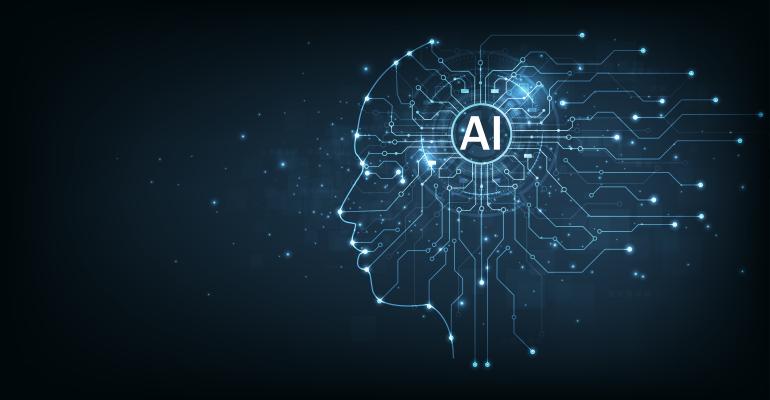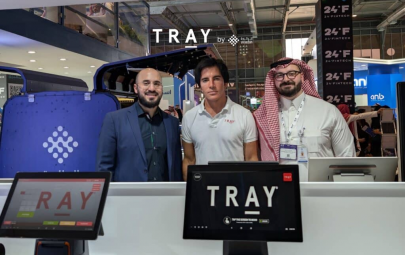Pie in the sky or low-hanging fruit? What AI can and cannot do for restaurants today and in the future

Deciphering how AI can be a viable solution rather than a shiny object.
TRAY’s Founder and CEO, Peter Kellis, did his Masters at MIT in Artificial Intelligence so when Nation’s Restaurant News needed a source to discuss the value of the emerging technology for restaurants, he was happy to share his thoughts on both the promise but also the reality of where we are today.
I’m not new to AI. I did my Masters at MIT in Artificial Intelligence, specifically in a subfield of AI called machine vision. Back then, AI looked different — and saw things differently — than today. And it was certainly less popular.
As AI’s popularity increased thanks to our friends at Google, OpenAI and myriad other researchers who perfected deep learning and large language models, its applicability to the hospitality sector has become — at least in theory — tantalizing. It could improve the ordering experience, help track food preparation times, reduce errors, etc.
Many of these possibilities, while exciting, strike me in their current form as “the next shiny object” rather than a ready-to-go solution to the real challenges that operators face. There’s no doubt that AI has great promise, but in the restaurant space, where cost of solutions matter, caution and calculation is advisable. I believe operators should be shrewd and strategic when making technology decisions in 2024, considering what is “low-hanging fruit” rather than “pie in the sky.” Fruit, after all, is healthier than pie.
So what’s low hanging fruit? And what is pie in the sky? And what gets us from here to there?
The promising future of AI in restaurants
The future of AI in the restaurant industry is undeniably promising. There are a number of key areas where AI has and can make a significant impact in the years to come.
The adoption of voice ordering through AI-powered technologies has proven the power of AI to help operators navigate today’s labor constraints, but also enhance customer experience through speedy service, tailored recommendations and lessening the chance of human error in the order-taking process. In fact, ZipDo cites that 29% of restaurants use AI-powered voice assistants for drive-thru orders. AI-driven inventory management and demand forecasting help reduce food waste and optimize supply chain logistics, and AI-powered surveillance systems can monitor food safety standards and hygiene protocols in real time, ensuring compliance with regulations and protecting the health of guests.
Restaurants can increasingly tap into technologies that support personalization and customer engagement. AI will become even more adept at understanding individual guest preferences and delivering personalized experiences. From menu recommendations to tailored promotions, AI can help restaurants forge deeper connections with their patrons. In fact, PYMNTS found that 84% of consumers have been spending more time with merchants that tailor their engagements with end consumers. Further, machine learning is capable of organizing menu items in a way that incentivizes customers to order promoted items — an adaptable menu, if you will. It can also adjust pricing to maximize sales and consider current culinary trends and kitchen inventory.
Other operational benefits to come from AI include predictive analytics, where restaurants will be better able to anticipate trends and optimize inventory, as well as sustainability, where AI can optimize energy consumption and minimize food waste. Kitchen automation will also continue to evolve from today’s burger-flipping robots to more sophisticated tech yet to be seen. Lastly, AI-driven security systems will offer improved protection against theft and fraud, ensuring a safer dining experience for guests — all of massive importance in a day and age where cybersecurity is of paramount concern for consumers and businesses alike.
So with all this promise, is “AI” ready for prime time? And how does your operation get ready for it?
The current state of AI in restaurants: A reality check
I have visited several customers recently who are researching how to incorporate AI into their restaurant operations. One of them, a forward-thinking brand with multiple stores, a successful product, and a flair for technology, has multiple AI initiatives under consideration, including a vision system that monitors their food prep lines and helps track speed of service.
Such a system should in theory be able to track a ticket as it prints from the register and makes its way through the food preparation lines and into the customer’s hands. Tracking food preparation time accurately is important because it can help staff the kitchen to optimize labor cost vs. speed of food preparation, which drives revenue. So overhead cameras were added to the kitchen and machine vision systems were installed to capture each item as it’s being prepared and associate it with the right ticket. And it worked! Well, at least for maybe 90% or 95% of the time. That’s pretty good, considering how far along the tech has come. But is that actually enough to get to what the actual preparation time is with enough accuracy to be trusted? Unfortunately, no. Not yet.
And there’s the rub. That last 5% when making a new technology work can take 95% of the time. It’s the difference between a cool research project and a proven and true product that has achieved product-market fit. The consistency and the repeatability of it all are hard to get right, and they take time.
We’re currently working with this customer to reinvent the kitchen display system in a way that better suits their operations. KDS was created with the goal of tracking food preparation times decades ago and it continues to be improved. If your restaurant doesn’t use KDS, it might be lower hanging fruit than a machine vision system to track food preparation times.
Vendors are right to be working on AI tech now and forward-thinking customers with enough budget for R&D should be experimenting. Over time, as technology matures, vision, voice, robotics, and other cutting-edge technologies will naturally make their way into restaurant operations in a cost-effective way. But if your POS system is 15 years old and your Windows back office server is crashing every week, if you haven’t yet implemented tablets for your table ordering, or if you don’t use self-service, you might have healthier lower hanging fruit decisions to make in the short term to improve your operations.
Looking ahead
It isn’t difficult to become fascinated with the latest and greatest technologies, but there is danger in falling for AI for AI’s sake. Every operator is time- and budget-constrained, which requires laser focus and absolute discernment when it comes to the adoption of new technologies, including AI. I urge you to approach AI with a healthy understanding of what it can and cannot do for your business and remain flexible and agile knowing change is ever constant. While today’s AI developments are exciting, it’s crucial to understand that AI should complement a healthy overall technology stack. The most successful establishments will leverage AI as a tool to enhance their operations once their core technologies have been modernized.
AUTHOR BIO
As founder & CEO, Peter Kellis is responsible for leading the company and product vision at TRAY, a leading provider of cloud-native enterprise-class POS systems. Peter holds undergraduate and graduate degrees in Electrical Engineering and Computer Science from MIT, and holds over 35 patents in data replication technologies.
Categories:



